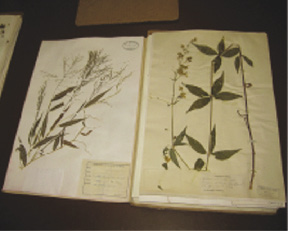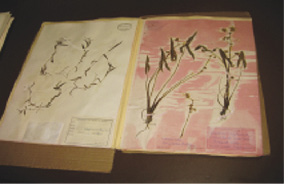With more than five million specimens, the Harvard University Herbaria are among the 10 largest Herbaria in the world and, along with the library, form the world's largest university-owned herbarium.
The Harvard University Herbaria are collections of pressed, dried plant specimens that are used by researchers and scientists around the world.The specimens are carefully mounted on sheets of archival quality paper, labeled with important information, and stored on shelves in cabinets.
During a holiday break, a water pipe burst causing an immediate flood in the University's Herbaria. Staff members were able to remove the wet specimens from the cases, assess the degree of wetness, put saturated specimens in plastic bags, and place them in a large walk-in freezer.
Slightly wet sheets were spread on dry surfaces to air-dry.
SOLUTION:
BELFOR and Harvard University ran a series of tests to determine the best technique for drying and restoring the specimens. Vacuum-freeze drying was chosen as the preferred method.
1. Inventory and pack specimens with dry ice at the University.
2. Transport packed specimens to BELFOR freeze-dry facility in Fort Worth, Texas.
3. Unpack, sort and place in Thermal Vacuum Freeze-Drying Chamber. Complete drying process
4. Repackage and ship specimens back to University Herbaria.
CHALLENGES:
Handling saturated and frozen botanical specimens, part of America's natural history dating back to 1842 and collections of Asa Gray, with the delicacy and respect deserved.
Assuring University staff that valuable, one-of-a-kind collections would be processed and returned in a usuable condition.
BELFOR welcomed the opportunity to work on this complex project. When vital documents or a one-of-a-kind collection is at peril of being lost, it calls upon the collective talents of the curator and experienced restoration team to select, test and complete a recovery approach without sacrificing any part of the collection. Many of the principles of document restoration apply to structures and dwellings we restore from similar flood damage. We do this everyday and we do it well.
"Except for slight bleeding of water soluble inks on the sheets and labels, the specimens were in remarkably good condition and perfectly suited for scientific analysis." said Melinda Peters, curatorial assistant.
"We were so pleased at how well the specimens were handled by BELFOR. None of the specimens showed any signs of physical damage, so we know they were handled with care. We would certainly recommend BELFOR to anyone who had the same kind of damage to specimens," said David Boufford, senior research scientist.
Gerard McGonagle is the general manager BELFOR Property Restoration, Hopkinton, Mass.











